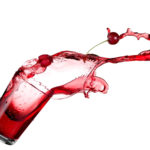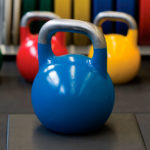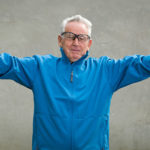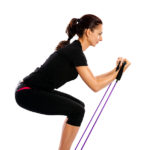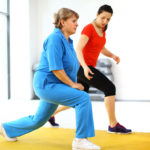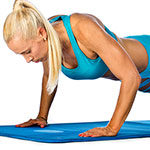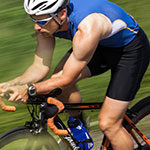
Len Kravitz, PhD
Len Kravitz, PhD
Article Archive
Emerging research suggests tart cherry juice has a unique blend of
powerful anti-inflammatory and antioxidant agents that help athletes and
exercise enthusiasts recover faster from exhaustive exercise. This
discovery is attracting growing interest among fitness professionals.
Every year, the science of sports medicine gets better at determining the effectiveness of specific exercise programs—a point made clear at the latest annual meeting of the American College of Sports Medicine.
Read MoreSuspension exercise combines body weight and anchored, seatbelt-like straps to provide an alternative to free weights and machines. The question on a lot of trainers’s minds is whether these strap-based training systems work as well as more traditional resistance training tools. Though research into this question has been somewhat sparse, studies are starting to paint a picture of effective ways to integrate suspension exercise into a workout program.
Read MoreKelleher, A.R., et al. 2010. The metabolic costs of reciprocal supersets vs. traditional resistance exercise in young recreationally active adults. The Journal of Strength and Conditioning Research, 24 (4), 1043–51.
Read MoreCrous-Bou, M., et al. 2014. Mediterranean diet and telomere length in Nurses’ Health Study: Population based cohort study. British Medical Journal, 379, G6674; doi: 10.1136/bmj.g6674.
Read MoreFitness professionals expend considerable energy helping people to lose weight, but there’s another way to view this challenge: What are the main factors that cause people to gain weight??
Research shows that two-thirds of Americans are overweight or obese (Ogden et al. 2014), a health condition associated with hypertension, cardiovascular disease, diabetes, depression and various cancers (breast, endometrial, colon and prostate) (Malik, Schultz
&
Inflammation is the body’s immune, self-protective and healing response to harmful stimuli, irritants, pathogens and damaged cells. Most inflammation is acute, such as when you sprain your ankle. Symptoms of inflammation include swelling, redness, pain and (sometimes) impaired movement or function.
Read MoreDeveloping a thorough understanding of coronary artery disease (CAD) can help fitness professionals fight one of the world’s deadliest diseases. ?
How deadly? For starters, CAD is the leading cause of death around the world, accounting for 13.2% of all deaths in 2012 (WHO 2014a). It kills almost 380,000 Americans every year (CDC 2014a). Exercise professionals can do something about these statistics by designing fitness programs that reduce CAD risk factors in clients while improving their quality of life. ?
Read MoreSome of us call it “afterburn”—the elevated calorie burning that lasts long after exercise is over. The scientific literature defines it as excess postexercise oxygen consumption, or EPOC (see Figure 1). ?
For the most part, EPOC represents the body restoring itself from physiological variables elevated by exercise. EPOC is an important physiological phenomenon for fitness professionals because it can play a contributing role in weight management. ?
Read MoreCrous-Bou, M., et al. 2014. Mediterranean diet and telomere length in Nurses’ Health Study: Population based cohort study. British Medical Journal, 379, G6674; doi: 10.1136/bmj.g6674.
Read MoreA recent special edition of the Journal of Applied Physiology focused on eccentric training, best defined as using active force to produce muscle tension while the muscle is lengthening.
Read MoreResearch on resistance training design finds that the chief variables include intensity, volume, recovery between sets and exercises, workout frequency, equipment and speed of movement (Sima?o et al. 2012).
Read MoreResearchers have consistently focused on cardiovascular exercise’s role in pre- venting coronary heart disease, type 2 diabetes, hypertension, some cancers and other chronic diseases. Other studies have examined whether cardiovascular exercise reduces stress, depression and anxiety (Ahiskog et al. 2011).
Read MoreNo doubt personal trainers were surprised and confused after learning about a recent Annals of Internal Medicine study challenging the long-held association between saturated-fat intake and heart disease. Some media reports pounced on the study results, essentially giving green-light messages to eat more red meats and butter.
Read MoreDiabetes affects nearly one-tenth of the U.S. popula- tion—a widening epidemic with more than 5,000 new cases per day and an economic cost of $245 billion per year (ADA 2013).
Read MoreMost personal trainers design anaerobic workouts for their clients—it is an innovative strategy that helps many people reach their goals. Competitive athletes have been training anaerobically for years. But these types of programs also offer recreational exercise enthusiasts challenge, variety and unique physiological adaptations. This article provides an overview of the scientific theory and physiology…
Read MoreLong-distance running continues to attract new enthusiasts throughout the world (Tonoli et al. 2010); its unique combination of benefits can help people to control their weight, improve cardiovascular function and fend off a host of chronic health problems (van Gent et al. 2007; van Middelkoop et al. 2008). But for all these advantages, running is hard on some parts of the body, often leading to lower-extremity injuries (van Middelkoop et al. 2008).
What Are Running Injuries, and How Prevalent Are They?
Read MoreAbout 10 years ago, the CDC and the arthritis Foundation launched the national arthritis action Plan: a Public health strategy. This collaboration resulted in a landmark document with a consensus of lifestyle and exercise guidelines for people who suffer from chronic arthritis. here is a synthesis of the physical activity recommendations:
Read MoreHigh-intensity interval training is enormously popular in the fitness industry this year. HIIT workouts typically include short bursts (6 seconds to 4 minutes) of intense exercise (?90% maximal aerobic capacity) alternating with relief breaks of varying lengths (Kessler, Sisson & Short 2012; Boutcher 2011).
The workouts include a limitless vari- ety of exercises, including
Read More